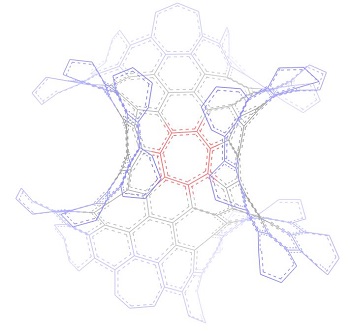
Fig. 1. A beginning of the hyperbolic surface growth by adding layers of heptagons around the central one (shown in red). There are 7 heptagons in the first layer (grey), and 21 in the second layer (blue).
Fig. 4. Schwartz P-surface made out of heptagons. Coloring shows that the same symmetry of heptagons tiling in P207-C168 structure can be visualized in several ways: four pairs of adjacent trimers on the left side, or three pairs of circular tetramers on the right side.
Interactive 3D model showing TPMS growth
by adding heptagons in the hyperbolic
soccer ball pattern (requires
javascript).
Controls: spin | no spin | spacefill
| wire
| ball&stick
labels on | off | color |
Fig. 2. Element
of the D-surface decorated by heptagons.
It is constructed by joining four circular
hexamers of heptagons.